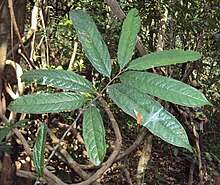
The bongo is a large, mostly nocturnal, forest-dwelling antelope, native to sub-Saharan Africa. Bongos are characterised by a striking reddish-brown coat, black and white markings, white-yellow stripes and long slightly spiralled horns. It is the only tragelaphid in which both sexes have horns. Bongos have a complex social interaction and are found in African dense forest mosaics. They are the third-largest antelope in the world.

The kodkod, also called guiña, is the smallest felid species native to the Americas. It lives primarily in central and southern Chile, as well as marginally in adjoining areas of Argentina. Since 2002, it has been listed as Vulnerable on the IUCN Red List as the total population may be less than 10,000 mature individuals; it is threatened by persecution, and loss of habitat and prey base.

The crab-eating fox, also known as the forest fox, wood fox, bushdog or maikong, is an extant species of medium-sized canid endemic to the central part of South America since at least the Pleistocene epoch. Like South American foxes, which are in the genus Lycalopex, it is not closely related to true foxes. Cerdocyon comes from the Greek words kerdo and kyon (dog) referring to the dog- and fox-like characteristics of this animal.

The Santa Cruz cypress is a species of North American tree within the Cypress family. The species is endemic to the Santa Cruz Mountains within the Santa Cruz and San Mateo counties of west-central California. The U.S. Fish and Wildlife Service listed the species on the Endangered Species Act in 1987 due to increasing threats from habitat loss and disruption of natural forest fire regimes. In 2016, the conservation status of the Santa Cruz cypress changed to Threatened. The cited reasoning was a decrease in threats against their habitat.

The Red Hills salamander is a fairly large, terrestrial salamander growing to about 255 millimetres (10.0 in). Its body color is gray to brownish without markings, and its limbs are relatively short. It is the official state amphibian of Alabama, the state it is endemic to. It is the only species in the genus Phaeognathus.
The Mount Oku hylomyscus is a species of rodent in the family Muridae. Found only on Mount Oku, Cameroon, in tropical Central Africa, its natural habitat is tropical moist montane forests. It has a very small range and is threatened by habitat destruction, so the International Union for Conservation of Nature has rated its conservation status as being "critically endangered".
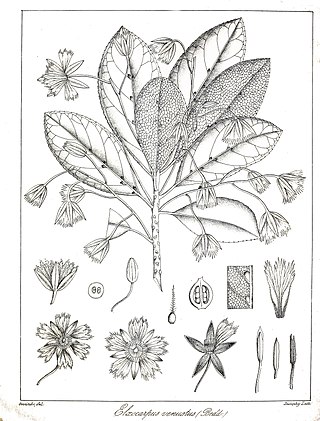
Elaeocarpus venustus is a species of flowering plant in the Elaeocarpaceae family. It is found only in the Western Ghats of Tamil Nadu state in southern India. It is Critically Endangered, and threatened by habitat loss.
Lemurophoenix halleuxii is a species of palm tree, the only species in the genus Lemurophoenix. It is found only in Madagascar. It is threatened by habitat loss and overcollection. There are perhaps 300 mature individuals remaining in the wild.

Aplastodiscus albosignatus, also known as the Bocaina treefrog, is a species of frog in the family Hylidae. It is endemic to Brazil. Its natural habitats are subtropical or tropical moist lowland forests, subtropical or tropical moist montane forests, and rivers. It is threatened by habitat loss.
The long-billed forest warbler, also known as the long-billed tailorbird, is a songbird of the family Cisticolidae, formerly part of the "Old World warbler" assemblage. It is found in Tanzania and Mozambique. Its natural habitat is subtropical or tropical moist montane forests. It is threatened by habitat destruction.
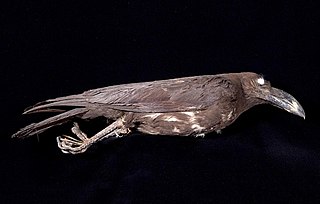
The brown-headed crow is a passerine bird of the genus Corvus in the family Corvidae. Endemic to Indonesia, it has a fragmented distribution in subtropical or tropical moist lowland forest and subtropical or tropical mangrove forest. It is threatened by habitat destruction and the IUCN has rated it as being "near-threatened".
The yellow-footed honeyguide is a species of bird in the family Indicatoridae. It is found in Cameroon, Guinea, Liberia, Sierra Leone, Ivory Coast, Ghana and Nigeria. Its natural habitat is subtropical or tropical moist lowland forests. It is threatened by loss of its forest habitat.
Actinodaphne lawsonii is a species of plant in the family Lauraceae. It is endemic to the Western Ghats of southern India. It is threatened by habitat loss.

Goniothalamus is one of the largest palaeotropical genera of plant in family Annonaceae.
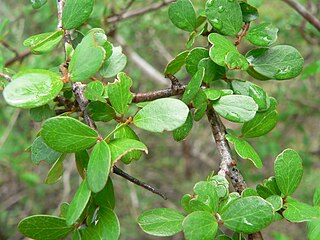
Khaya madagascariensis is a species of plant in the family Meliaceae. It is found in Comoros and Madagascar.
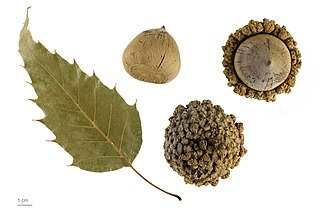
Quercus skinneri is a species of oak. It is found in Mexico, Guatemala, Honduras, and El Salvador. It is threatened by habitat loss.

Magnolia sharpii is a tree species of Magnolia from Chiapas, Mexico. It grows in wet tropical habitats.
Goniothalamus nitidus is a species of plant in the family Annonaceae. It is native to Borneo. Elmer Drew Merrill, the American botanist who first formally described the species, named it after its shining leaves.

Magnolia vallartensis is a species of Magnolia from Jalisco state in western Mexico.
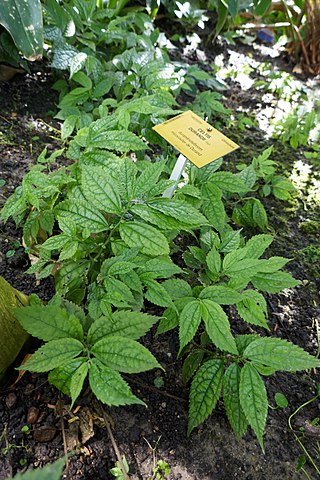
Celtis gomphophylla is a species of flowering plant native to sub-Saharan Africa, Madagascar, and the Comoros.
